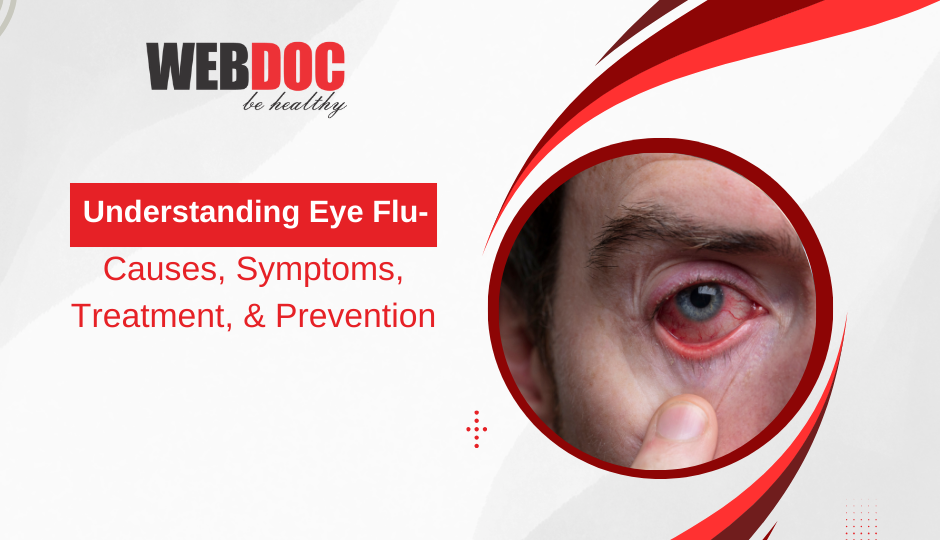Introduction
Eye flu, scientifically known as viral conjunctivitis, is a common and highly contagious eye infection that affects people of all ages. This condition is characterized by inflammation of the conjunctiva, the thin, clear tissue covering the white part of the eye and the inner surface of the eyelids. While eye flu is typically a self-limiting condition, it can be uncomfortable and disrupt daily activities. This article will delve into the causes, symptoms, treatment options, and preventive measures associated with eye flu.
Causes
Eye flu is primarily caused by viral infections, with the most common culprits being adenoviruses, which are part of the same family of viruses responsible for the common cold. Other viruses, such as herpes simplex and enterovirus, can also cause viral conjunctivitis. Bacterial infections and allergens can trigger similar symptoms but are distinct from viral conjunctivitis.
Symptoms
- Redness: One of the hallmark symptoms of eye flu is redness of the eye, which is caused by the inflammation of the blood vessels in the conjunctiva.
- Itching and Irritation: Patients often experience itching and irritation in the affected eye, which can be quite uncomfortable.
- Excessive Tearing: Eye flu can lead to increased tear production, resulting in watery eyes.
- Discharge: A watery or thick discharge from the eye, which may be clear or slightly yellowish, is common in viral conjunctivitis.
- Swelling: The eyelids may become swollen, making it difficult to open the eye fully.
- Light Sensitivity: Photophobia, or light sensitivity, can be present, making exposure to bright lights uncomfortable.
- Foreign Body Sensation: Some individuals with eye flu report a feeling of having a foreign object, such as sand or grit, in their eye.
Treatment
- Artificial Tears: Lubricating eye drops (artificial tears) can help relieve discomfort by soothing the irritation and reducing dryness.
- Cold Compresses: Applying a cold compress over the closed eyelids can reduce swelling and relieve itching.
- Antiviral Medications: In severe cases, antiviral eye drops may be prescribed by a healthcare professional to combat the underlying viral infection.
- Antibiotics: If a bacterial infection is suspected or present alongside viral conjunctivitis, antibiotic eye drops or ointments may be prescribed.
- Steroid Eye Drops: Inflammation can be managed with steroid eye drops, but these should only be used under the supervision of a healthcare provider, as they can worsen certain viral infections.
- Avoidance of Contact Lenses: If you wear contact lenses, it’s advisable to discontinue their use until symptoms resolve to prevent further irritation.
Prevention
Preventing eye flu is crucial, especially because it is highly contagious. Here are some preventive measures to keep in mind:- Hand Hygiene: Wash your hands frequently with soap and water, especially after touching your eyes or face.
- Avoid Close Contact: Try to avoid close contact with individuals who have eye flu symptoms to minimize the risk of transmission.
- Avoid Sharing Items: Refrain from sharing personal items like towels, makeup, or eye drops, which can spread the infection.
- Proper Disposal: If you use disposable tissues or wipes to clean your eyes, ensure proper disposal to prevent the spread of the virus.
- Disinfection: Frequently disinfect surfaces that may come into contact with your hands or face.
- Seek Medical Advice: If you suspect you have eye flu, consult a healthcare professional for guidance on treatment and to confirm the diagnosis.
Conclusion
Eye flu, or viral conjunctivitis, is a common eye infection that can cause discomfort but is usually not serious. Knowing its causes, recognizing the symptoms, and taking appropriate preventive measures can help reduce its incidence. If you develop symptoms of eye flu, seek medical advice promptly to manage the condition effectively and prevent its spread to others. With proper care and hygiene, most cases of eye flu resolve without significant complications.


